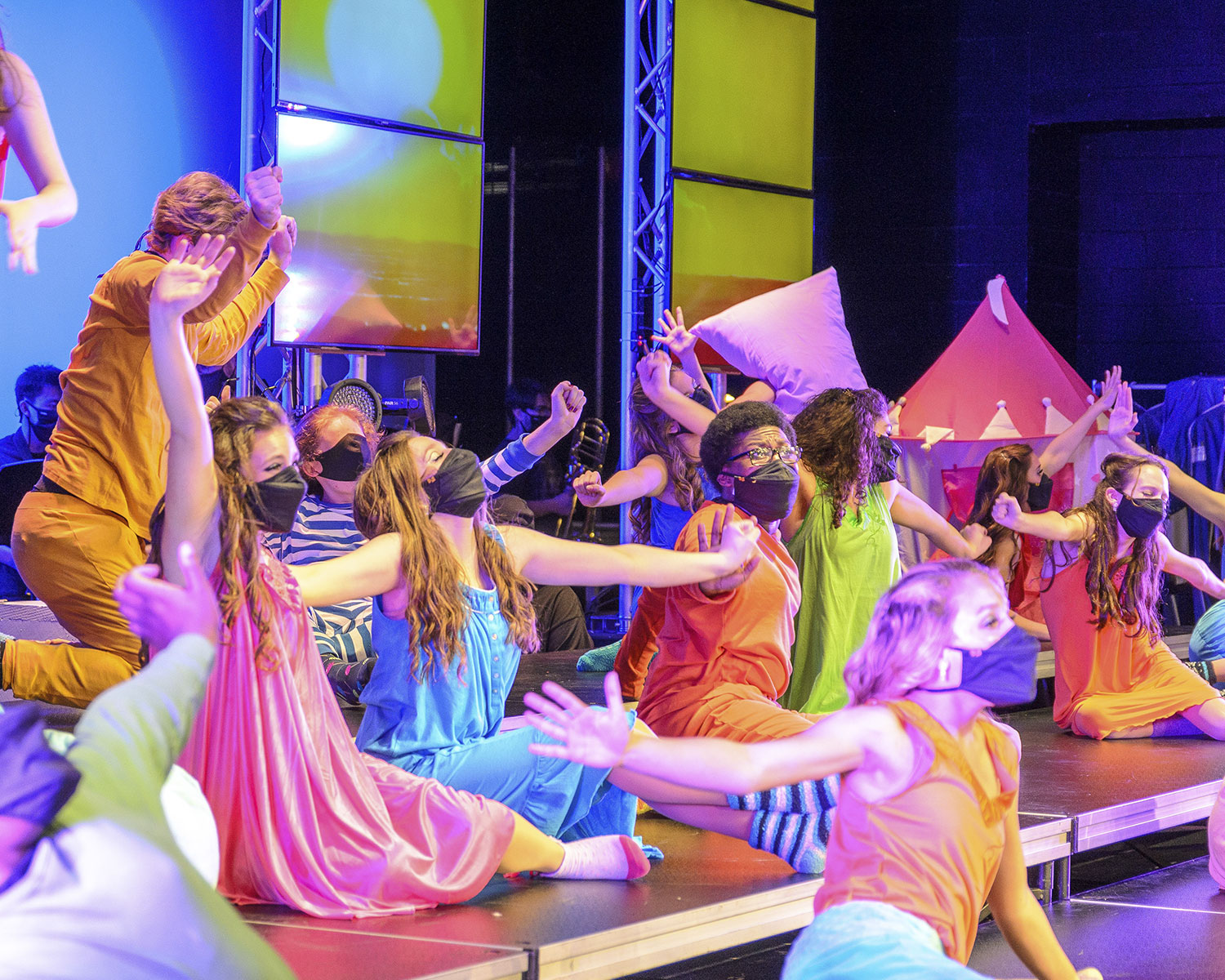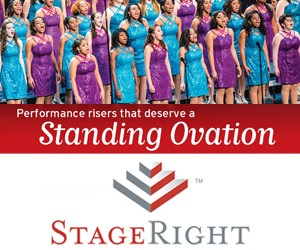
As the date was approaching, I had a growing list of questions going through my mind. Would the judges be on-site or working from home? Would we be able to work through expected technical difficulties? Is this even going to work as a viable way to adjudicate show choirs?
We gathered and got our instructions from our host and shortly, we were watching a middle school group putting on an amazing performance on a large screen at the front of the director’s choir room. Broadcast on YouTube Live, we could see and hear them relatively clearly—clearly enough to adjudicate their vocals and moves well. Personally, it wasn’t ideal, but I was greatly impressed!
Then came the second group, a high school show choir. It was a sound disaster. It was a series of hoots, beeps, and choppy electronic sounds. After a few minutes, the choppiness resolved; however, the other vocal judge and I had no idea what their lyrics were. We could decipher tone and pitch but that was all. So, because we weren’t able to adequately hear all vocal aspects, they were moved down in score on diction and phrasing.
Throughout the day most performances had the same technical clarity as the first group. Our host had scheduled each group a thirty-minute time slot, allowing for any technical issues to be quickly resolved. There was only one other group that experienced two “false starts” that took a bit of time to correct, but once corrected, it went well.
Another great opportunity our host offered was immediately following each performance, he reconnected the director via a closed YouTube link so that each adjudicator could give them instant feedback. In this setup, the director could see us, but we could not see the director. For safety, our host brought a laptop to the judges one at a time.
All in all, there were two enormous takes from that day. First and foremost was how incredibly impressive many of the performances were considering they were being broadcast (more than likely) through a phone or similar device and we could still easily and clearly hear their vocals while executing difficult choreography—and they were wearing masks! The second stand out was “yes, this really did work as a viable way to adjudicate show choir.”
The Upside of Virtual Competitions
Now that we have been through a year of complete change and unknowns, there will surely be an argument regarding both sides of virtual competitions. Honestly, there are some very optimal points to be considered.
This medium provides several opportunities perhaps not considered before the pandemic. For smaller and remote groups with barely a budget for music, a choreographer, and costumes, virtual competition opens the door for these groups to experience the aspects of competition such as scores and critique from industry professionals. Our location offered the director an immediately condensed clinic following their performance. Instant critique would be extremely valuable to directors and students alike and can give them an edge for better performance in their local areas. These could be vital to a smaller group for growth and development without the expense of travel. There are also many show choirs in Western and Plains states where it is too far to travel to a competition, and this makes participating in a competition possible.
Family, Friends, and Far Away
Another variable was several large groups were able to compete in two to three competitions at different locations around the country in one day. Something not possible in years before. They only had one set up and strike for the day and many of their families and friends were able to watch them live. When a group travels a far distance, usually only a handful of parents and friends can join them.
Now, at this point, it would be easy to argue that this avenue of virtual competitions only happened because of travel and gathering restrictions due to Covid-19. I must agree with that point. However, if the past year had not happened the way it did, I am not sure our industry would have considered this direction for competitions anytime soon.
Future Possibilities
For a moment, let us look at some future possibilities. At a live competition, there could be a virtual competition being held in a separate on-site location. The virtual could have a limited number of judges, say three or four. If that location had finals in the evening, the additional judges could join. Another situation would be the creation of more “festival” type events where the virtual performers would not be competing but would still be getting crucial critique from judges. These could take place early in the competition season to help groups improve their performances in their local areas. Any of these options are also an additional revenue source for the host program.
The Downside of Virtual Competitions
In the spirit of fairness, the downsides of virtual competitions must be discussed. In no particular order, the following are some obvious low points of virtual competition.
Students would be missing the action and excitement of a live performance in front of their peers. And the cheering and support from fellow show choir peeps, especially the ones you do not know personally would be absent. And our group would not be able to enjoy or study a seasoned show choir.
It’s important to learn the ins and outs of going to a show choir competition. Students would not get the opportunity of the entire competition experience, like setting up and tearing down within minutes, long waits in the “homeroom” or the late-night bus ride home. The shows, the food, the fun, and the exhaustion are all part of making the memories.
The quality of what the judges see and hear virtually is far less than what can be produced live on stage.
Cheering, this may sound odd, but when parents and fellow students cheer at a live performance, judges can pretty much still hear what is coming off the stage. When cheering happens on a virtual performance, everything is drowned out, and can take a second or two for the audio to return to normal giving the opportunity of missed vocals which can result in missed points. Most programs highly encourage their parents and supporters to do the “cheer wave” during songs, which is highly recommended for ALL show choir competition performances.
A Viable Option
All in all, weighing the strong and not-so-strong points of virtual competitions, the strong points far outweigh the downsides. The door has been widely opened for creating an avenue for groups that have otherwise not been able to experience the show choir competition. Our industry is built on fine professionals with the most creative minds. My sincere hope is our industry will work together to make this viable option a reality from now on.











